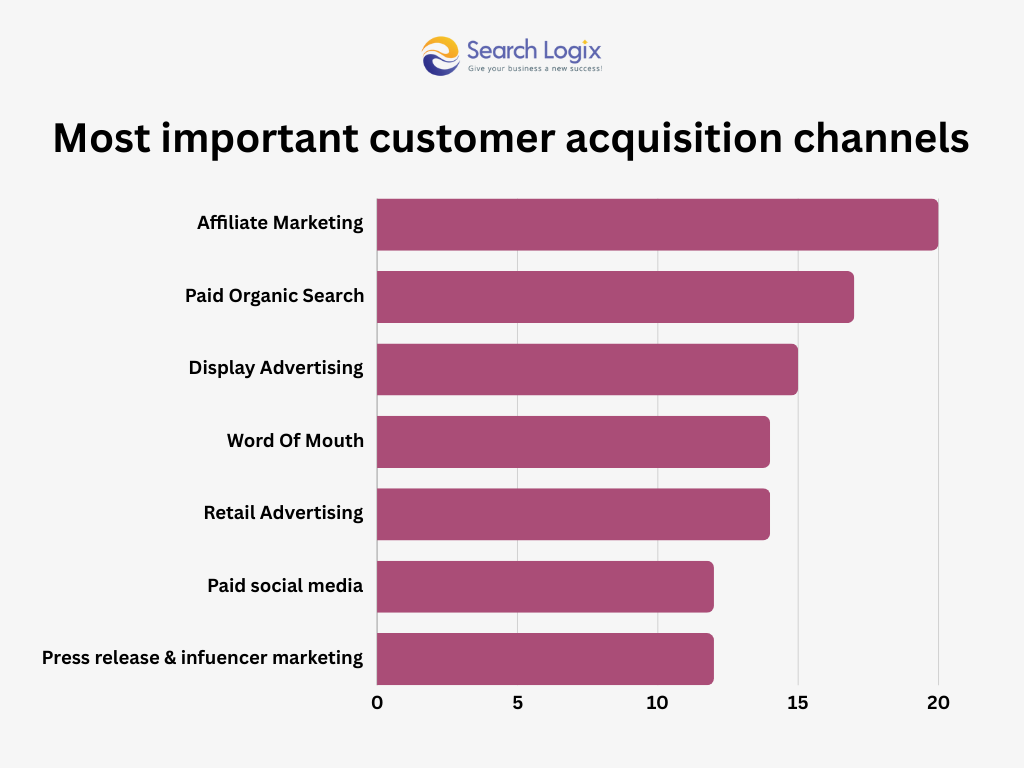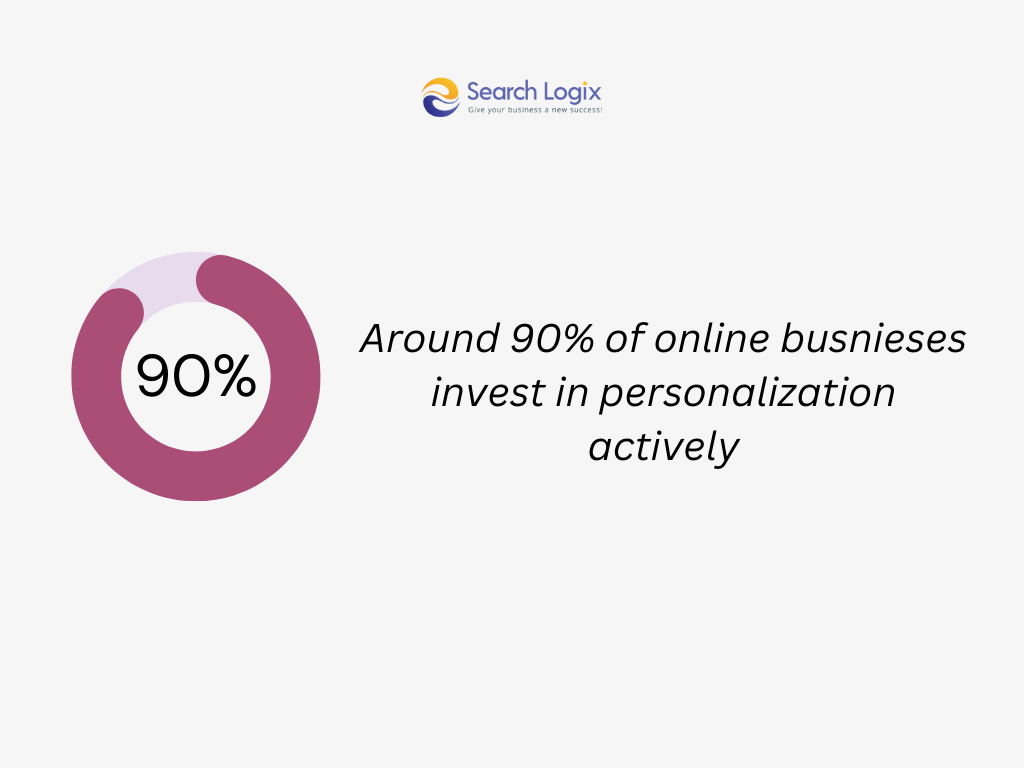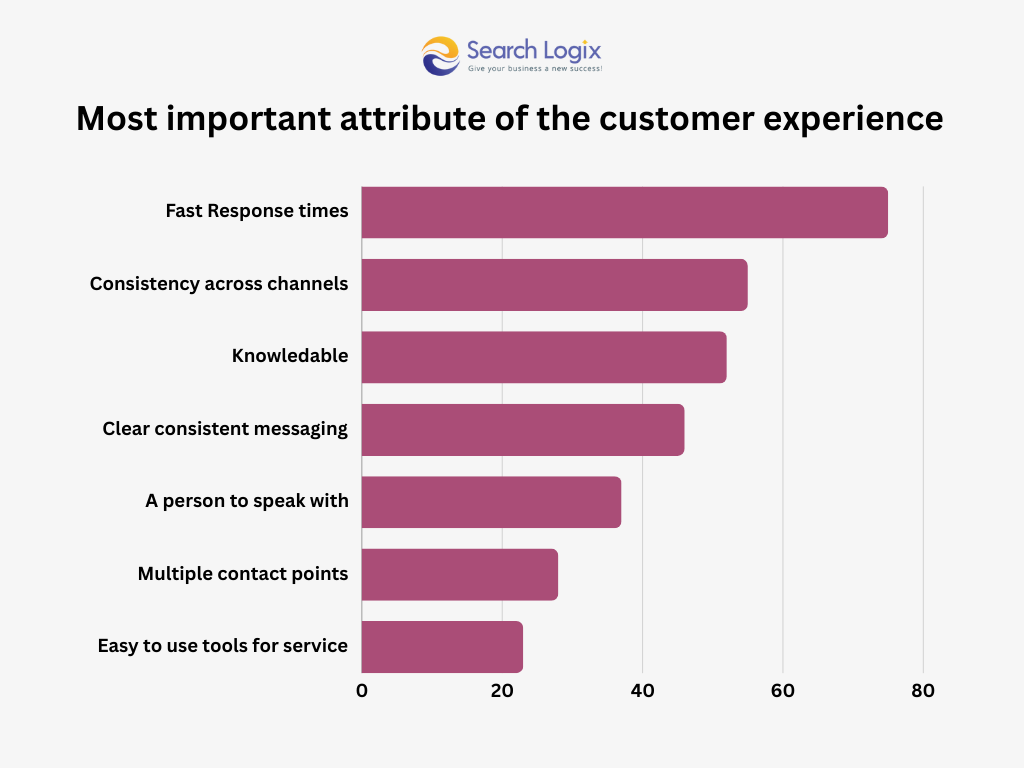15+ Proven Customer Retention Strategies
Still, in 2024 brands are between the horns of a dilemma-to retain or to acquire. New customer acquisition has become problematic and costly; at the same time, retention is not any less important than acquisition for achieving business success.
According to Harvard Business School, customer retention rates that go up by only 5% will yield 25-95% profits. In other words, every new customer is more expensive than retaining an existing customer since marketing costs rise.
Also, 44% of marketers predict a 5% to 25% increase in budgets to accommodate growing customer acquisition costs, and new digital tracking methods are major contributors to the cause.
Retaining customers now is easier said than done. An overcrowded marketplace means that customers are always going to face new buying options. The task now lies in trying new engagement techniques that keep your company on top of a current customer’s mind.
This blog shares some proven and effective customer retention strategies you can use to nurture and retain customers, helping them grow organically.
What is Customer Retention?
Customer retention is an art that keeps customers happy and brings them back for more. This is building long-lasting relationships rather than a straightforward transaction.
Loyal customers can best be seen by the exceptional service and personalized experiences, along with consistent value received. It is often in the small things that the most important things occur.
A nice e-mail, a surprise discount, or remembering the customer’s name can be very rewarding when it comes to trust and loyalty. Consistent delivery of promises, as well as surpassing expectations, will create a joyous and memorable experience for the customer.

To measure the success of your customer retention strategies, you will want to calculate your customer retention rate. Your customer retention rate is the percentage of customers that have stayed with your business in a given year or period.
Customer Retention Rate = [(Number of Customers at End of Period – Number of New Customers Acquired) / Number of Customers at Beginning of Period] x 100
If the retention rate is low compared to the benchmark of the industry, this is a sign to review your strategies. Improved retention rates can be achieved by analyzing the responses of customers, running loyalty programs, and providing fine support.
Why Customer Retention is Important?
Customer retention is essential to businesses as it helps in knowing customer loyalty, service quality, and those areas that require improvement. Focusing on retention may help businesses in the long run in the following ways:
1. Reduced churn rate
Knowing the needs and problems of the customers in advance, a company can respond before customer attrition ever occurs, thus reducing the risk. Getting new customers is usually an expensive process. Since retaining existing customers requires much less effort toward acquiring new customers, it saves the company a lot of money.
2. Expanded Customer Lifetime Value (CLTV)
Loyal customers are also likely to make repeat purchases and explore extra offerings. Consequently, increased revenue will be generated over time. Research shows that they spend 23% more chances to increase the average value of their order rather than the average customer.
More importantly, higher CLTV translates into higher profitability. Consequently, an investment in customer retention maximizes the value of each customer.
3. Reduced customer acquisition cost
Focusing on existing customers allows the business to utilize its resources properly. It is rather cost-effective to retain customers than to get new ones. Studies claimed that the business saves around 82% more by focusing on retaining customers.

An excellent customer base is a building block that lays a very solid basis for growth without depending on ever-increasing customer acquisition.
4. Competitive advantage
Exceptional customer experiences help businesses differentiate themselves from competitors and gain an edge. Loyal customers often become brand advocates, giving positive word-of-mouth and bringing in new customers, which may lead to increased market share and dominance of the brand.
5. Revenue dilation
Loyal customers are more willing to have additional products or services offered. Satisfied customers can create a new business through referrals. Studies indicate that a 5% improvement in customer retention equates to a 25-95% improvement in profits.
Customer retention can help businesses generate a great deal of profits considerably. Besides, existing customers supply around 65% of the company’s total business.
6. Improved brand reputation
Happy customers have positive brand messages spread, and this means enhanced brand awareness and perceptions of the brand. According to Yotpo, 60% of consumers indeed promote loved brands, thereby multiplying a business reach exponentially.
Most probably, a reputation for excellent customer service does significantly boost the brand image and reputation. Loyal customers are the best brand ambassadors. They gladly share positive experiences with friends and family as a form of digital marketing.
Top Customer Retention Strategies
Here’s the in-depth elaboration of the top customer retention strategies to help you implement and be well on your way to leveraging them efficiently.
1. Personalization and customer engagement
Personalization involves the ability to design experiences customized to individual customers, based on their unique preferences, behavior, and needs. It’s a lesson in taking experience beyond generic one-size-fits-all messages to highly relevant and engaging interactions.

Here are certain strategies to personalize your message to customers:
- Understand customer preferences: Utilize AI algorithms that evaluate customer data consisting of purchase history, browsing behavior, and demographics on what patterns and preferences arise.
- Deliver relevant recommendations: Use AI-driven recommendation systems to offer products or services, such as “You May Also Like” suggestions that appear on several e-commerce platforms.
- Product-based triggers: Trigger communications based on product use, such as refill reminders or follow-up communications after making a purchase.
- Gamification: Add elements of games into marketing strategies to encourage engagement and reward loyalty from customers.
2. Improve product/service quality
Quality is a precursor of retention. Customers will not come back if what you are offering is not meeting their expectations.
Here are certain tips to improve the overall quality of your service and product:
- Continuous improvement cycle: Use their feedback, reviews, and complaints for areas to be improved.
- Beta testing: Have them test out new products or updates so they feel appreciated for being included in the process while ensuring quality.
- Transparency: Admit when you screw up and publicly state what you are doing about the issue.
3. Run Loyalty Programs
Loyalty programs pay back the repeated patronage that creates repeat buys and the emotional bond as well.

Implementing the following tips to leverage loyalty programs:
- Design reward tiers: Design tiers with special treatment at greater interaction instance, free shipping, or special discounts for loyal customers.
- Make loyalty a game: Employ gamification strategies like earning progress bars or points to make users more prone to interact with your brand.
- Refer-a-friend programs: Reward existing customers with reciprocal incentives to attract new customers-for example, $10 off for both of them.
4. Leverage subscription model
It has recently become fashionable to adopt a subscription model; it allows businesses to provide a sustainable and predictable revenue stream while ensuring that customers receive recurrent value and can help enhance customer retention significantly.
Some of the key strategies involved in launching a subscription model are:
- Select suitable products: Look at products used regularly by customers and replenished, such as beauty products, coffee, or pet food.
- Curated experiences: Either experience-based or product-based subscriptions that are focused on their interests. For example, monthly book clubs or beauty boxes.
- Offer choices: Offer customers choices in making their subscription customized, such as frequency of deliveries or preferred products.
- Check-out and renewal process: Streamline the check-out process and include seamless renewal options.
- Use analytics for recommendations: Use data analytics to make recommendations for products and also to send up-selling opportunities to customers.
5. Improve post-sales support
Post-sales support is that aspect of customer relationship management that not only enhances a customer’s satisfaction but also enhances brand loyalty. Through such notable support, a business entity can ensure long-term relationships and encourage people to advocate.
The most effective strategies for improving post-sales support are as follows:
- Thank you and follow-up: A customized thank you note or email can make all the difference in getting off on a positive relationship level. Feedback from the purchase experience is requested to identify areas for improvement.
- Easy onboarding and support: Clear instructions and tutorials enable customers to start using your purchase easily. Timely and efficient support in case of any issues or queries is offered to customers.
- Continuous value delivery: Keep them informed with regular updates and training, so the customers can get maximum from their buy. Share relevant content like blog posts, webinars, video tutorials, etc. to keep them entertained.

- Proactive communication: Let users know about new functionalities and features to enhance their experience. Recommend products according to the customer’s engagement, behavior, and preference.
6. Educate your customers
The commercial success of a product launch is not selling. It’s about enabling the end-user to use the product productively. Incomplete training and support may greatly improve customer satisfaction, reduce churn, and generate long-term customer relationships.
Here are some tips you can apply:
- In-product onboarding: Engage new users through interactive tutorials and tooltips right within the product. The right assistance helps customers to get desired outcomes from your product, leading to increased adoption.
- Targeted email campaigns: A series of emails targeted to the customer’s journey should point out important features and best practices as needed for easily digestible pieces and avoid information overload.
- Individualized training: Give customer attention in a personalized training session by experts who can answer specific needs and questions. Provide real-time guidance and troubleshooting.
- Self-service learning: Maintain a central library of training material, including videos, tutorials, and FAQs. Provide easy access to information so customers can find the solution on their own.
- Community building: Establish a community where customers connect, share experiences, help each other, and are more likely to attract product experts to the community who will help answer questions and provide critical insights in those moments.
7. Community engagements
Long-term customer relationships are created through a strong, vibrant community. By providing such avenues where customers can reach out and share their experiences while being guided by others, you bring them together and foster loyalty.
Here are the top strategies to utilize community engagements:
- Create dedicated groups: Create online communities on social media platforms or forums where customers can connect, discuss the features of the product, and share tips.
- Promote interaction: Moderation of discussions, comments, and replies to open-ended questions to encourage conversation.

- Display user-generated content: Show customer-created content – images, videos, and reviews – as a way of demonstrating the creativity and passion of the community.
- Host contests and challenges: Have fun interacting with the community by asking them to share their experiences about your brand through contests, challenges, or submission of photos/videos.
- Organize in-person events: Conduct meetups, conferences, or other activities that bring your community together to encourage more face-to-face interaction.
8. Reward loyal customers
Recognition will boost emotional loyalty. Shout-outs to loyal customers in your social media or newsletters should be noted. Provide occasional gifts or coupons, or give upgrading for long-term customers every once in a while, as appreciation.
Offer special membership cards carrying different rewards, for example, priority service, offers to try new products, and the rest.
Here are the benefits that loyal customers can bring to you:
- Brand recognition: Recognizing and rewarding customers will only make the customer feel more closely knit to your brand.
- Positive word-of-mouth: Loyal customers are more likely to refer your brand to friends and family.
- Improved customer lifetime value: Rewarding loyal customers will build up their spending and lifetime value.
- Competitive advantage: A good loyalty program may be a good distinction for your brand compared to competitors.
- Customer insights: Studying customer behavior under loyalty programs can provide information to guide marketing campaigns in the future.
9. Attract customers with social proofs
According to the social proof theory, people tend to trust other opinions and behavior. Therefore, with the implementation of social proof, businesses can have much higher credibility and boost customer trust levels.

Some winning strategies to implement social proof:
- Put it strategically: Post positive reviews and testimonials on the website, social media, and marketing materials.
- Incite reviews: Plan incentives or discounts to get people reviewing your business.
- Collaborate with influencers: Partner with influencers in that niche to market your products to their followers.
- Authentic influencer collaborations: Choose influencers whose brand values align with your company and whose audience aligns with your target market.
- Show trust badges: Show trust badges through third-party review sites or security certifications.
- Media coverage: Highlight all media coverage and press mentions on your website.
10. Focus on solving a problem
Most businesses succeed quite well by focusing on a niche rather than trying to be the solution to everything. While carving a specific problem-set into their target market, companies can deliver more effective and impactful solutions.
Here are the perks you will leverage when you solve a critical issue:
- Deeper understanding of customer needs: Businesses, through concentrating on a specific problem, get to understand better the needs and pain points of their target customers.
- Strong branding: Difference from the rest, it allows businesses to stay ahead of other competitors and remain in front of a loyal clientele.
- Enhanced customer satisfaction: A differentiated product or service usually means the solution to a particular problem and thus yields higher customer satisfaction levels.
- Increased market share: It is achieved when businesses become the obvious solution in their niche for that problem.
11. Good customer service
Customers who are nurtured and cared for are more likely to remain loyal to a brand. Introduce systems like live chat, chatbots, or predictive analytics that can predict the needs of a customer.
For instance, in case a customer experiences trouble with a product, attach a troubleshooting guide or video tutorial before they ask for it. Train your customer support personnel to handle complaints tactfully and with empathy.

These are dissatisfied customers who become loyal advocates when treated well. Feedback from the customer support interaction is used to enhance overall experiences.
12. Maintain interaction consistently
Regular meaningful communication keeps the brand hot and trending at all times. Segment your email list to enable the sending of targeted updates regarding promotions, upcoming events, or the new product launch.
Maintain an active presence with engaging content shared, swift responses to comments, and live sessions. Ensure timely, relevant updates through mobile apps, like reminders of expiring reward points or replenishment of favorite products.
Boost Customer Retention with eSearch Logix.
Customer retention is the most crucial of all in the competitive market for long-term success. This blog introduces and practices the effective strategies that help to develop stronger relationships with customers, enhancing their lifetime value, and ultimately driving growth.
At eSearch Logix, we know how important customer retention is for businesses. Being one of the digital marketing agencies, we offer you a wide range of services to implement effective customer retention strategies. Our experts will be able to assist you in all the following ways:
- Data-driven insights: Leverage analytics to understand customer behavior and preferences at a deeper level.
- Personalized marketing campaigns: Design marketing campaigns that mean something to individual customers.
- Customer relationship management (CRM): Set up robust CRM solutions enabling the management of all customer interactions with better tracking of all the customer journeys.
- Social media engagement: Social media will be used in ways to engage communities and build brand loyalty.
- Email marketing: Personalized email campaigns for nurturing relationships and acquiring repeat business.
Partner with eSearch Logix to take your customer retention efforts to the next level and reap sustainable business growth.







